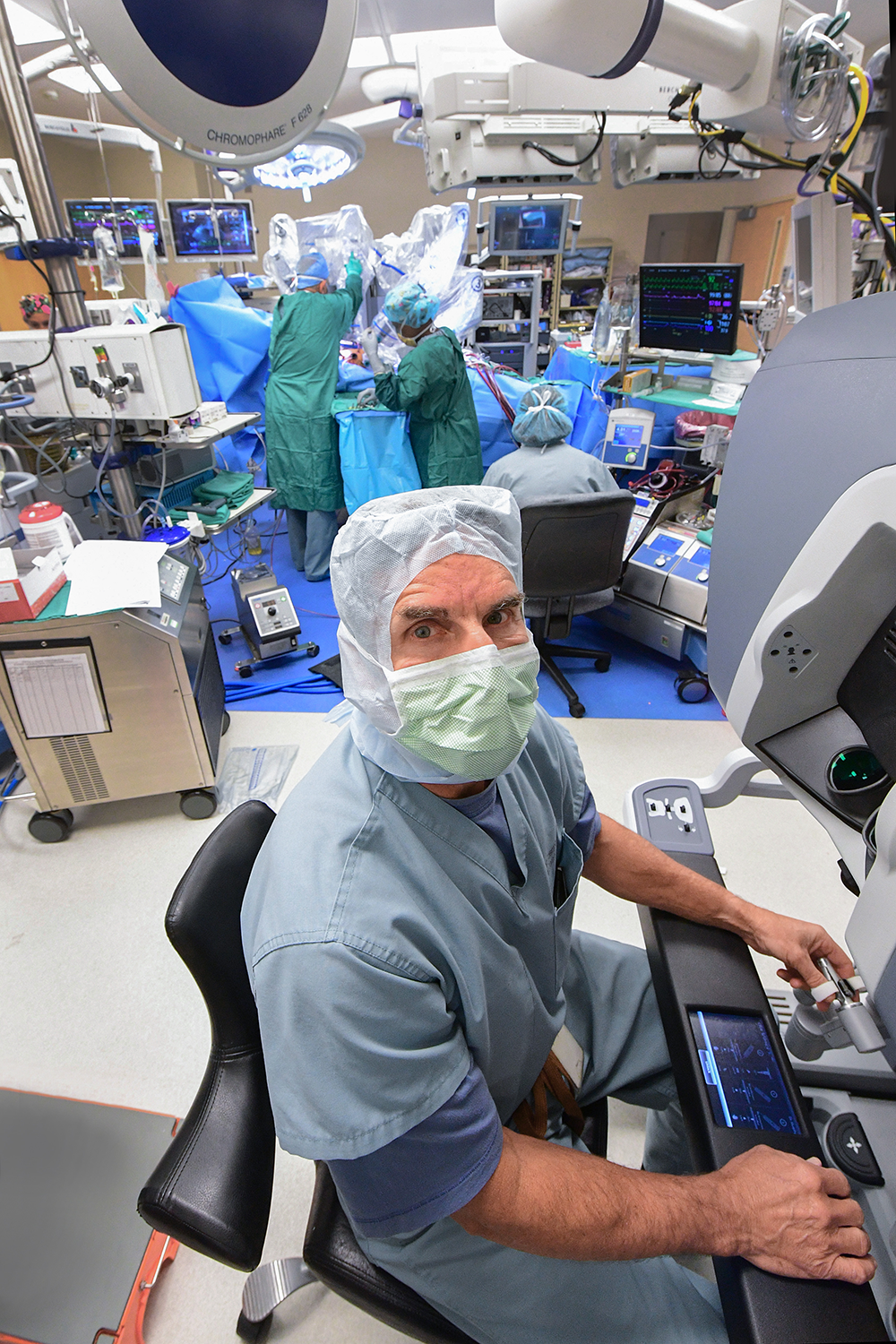Paging Dr. Robot
Robotic surgery is increasingly allowing doctors to do complex procedures with more precision, smaller incisions, less blood loss and pain, and quicker recovery times.

Douglas Murphy, chief of cardiothoracic surgery at Emory Saint Joseph’s Hospital.
Photo by Jack Kearse
And it’s growing in popularity—about 4,000 surgical robots are currently in use, a four-fold increase over the past decade.
How it works: Surgeons perform their usual movements on a console while watching the magnified surgical site on a 3D monitor. Their actions are translated into steadier and more accurate movements by a computer, and are carried out by a multi-armed robot positioned above the patient, which controls all of the surgical instruments.
Douglas Murphy, chief of cardiothoracic surgery at Emory Saint Joseph’s Hospital, and Michael Halkos, chief of the division of cardiothoracic surgery at Emory School of Medicine, recently hosted an Intracardiac Robotics Conference for surgical teams from Australia, England, Canada, and cities around the U.S.
The conference was sponsored by the International College of Robotic Surgery and the Emory School of Medicine, and gave teams the opportunity to learn specifics about establishing an intracardiac robotics program, hands-on laboratory work, and discussions with surgeons sharing the best techniques in robotics. “What the patient sees is a fast recovery—out of the hospital in three days, playing golf in three weeks, and cosmetically the scar is minimal—but that’s not the reason we do it,” says Murphy. “The reason we do it is because we can do the operations better.”
Murphy is a pioneer in robotic surgery, performing Georgia’s first robotic heart surgery at Emory Saint Joseph’s in 2002. Last year, he achieved a world record after completing his 2,000th robotically assisted mitral valve surgery.
In addition to repairing mitral and tricuspid valves, surgeons can also remove tumors and repair holes in the heart during robotic surgery.
Paul Modi, a surgeon from Liverpool Heart and Chest Hospital who has trained extensively with Murphy, recently performed the U.K.’s first cardiac robotic heart procedure with his assistance after the conference.
Emory’s Winship Cancer Institute has expanded surgical options for pancreatic cancer patients with the addition of robotic surgery. “Pancreatic cancer is very aggressive. If there are five people diagnosed, only one of the five is a candidate for surgery,” says David Kooby, professor at Emory School of Medicine and director of surgical oncology for Winship at Emory Saint Joseph’s and Emory Johns Creek hospitals.
Until recently, pancreatic cancer patients who were candidates for surgery had two options: traditional open abdominal surgery or minimally invasive laparoscopic surgery.
“Robotic surgery is a newer surgical option,” says Kooby. “The technical aspects of this surgery are pretty similar to open abdominal surgery, but without making a big incision.”
Email the Editor



